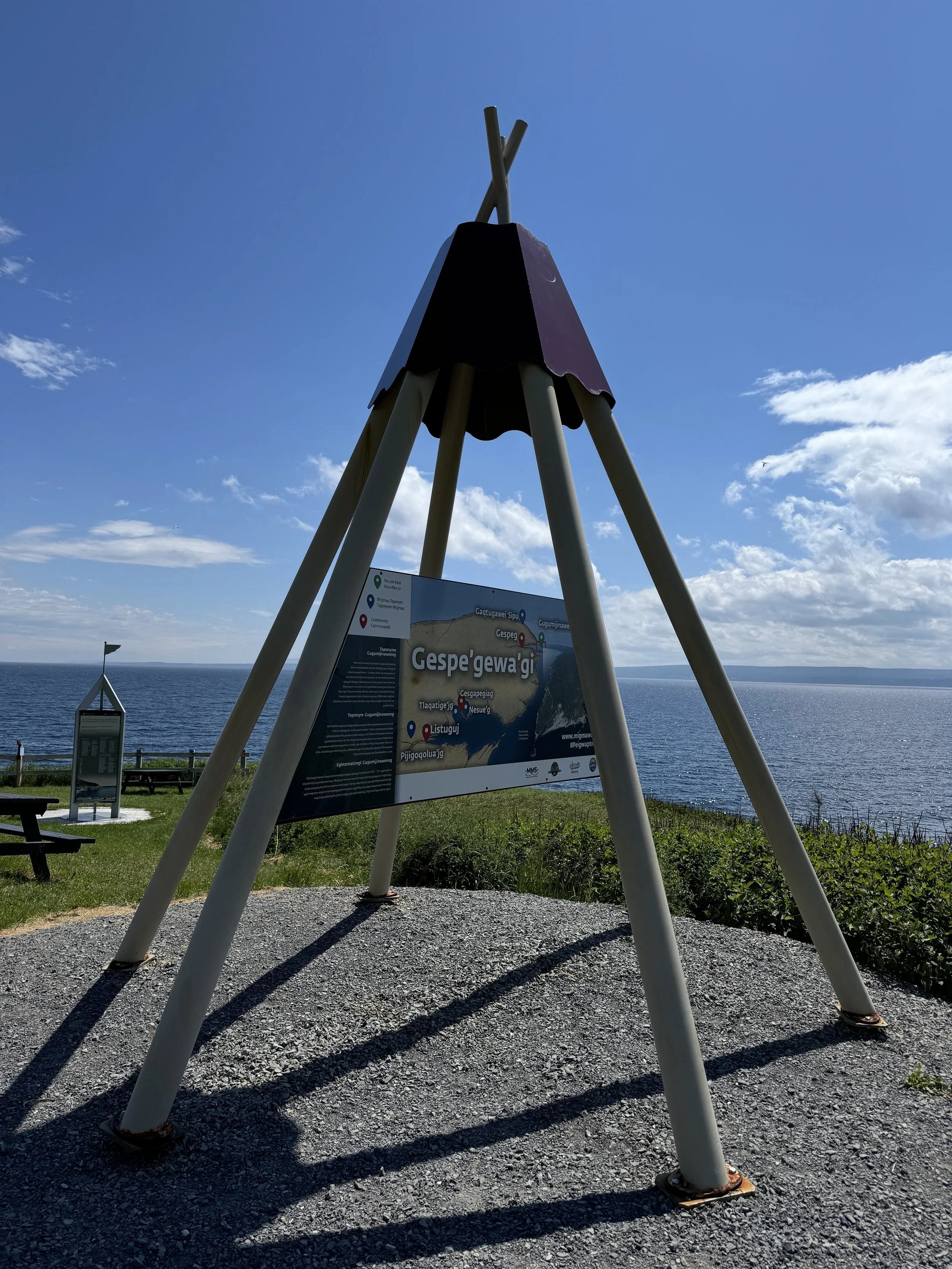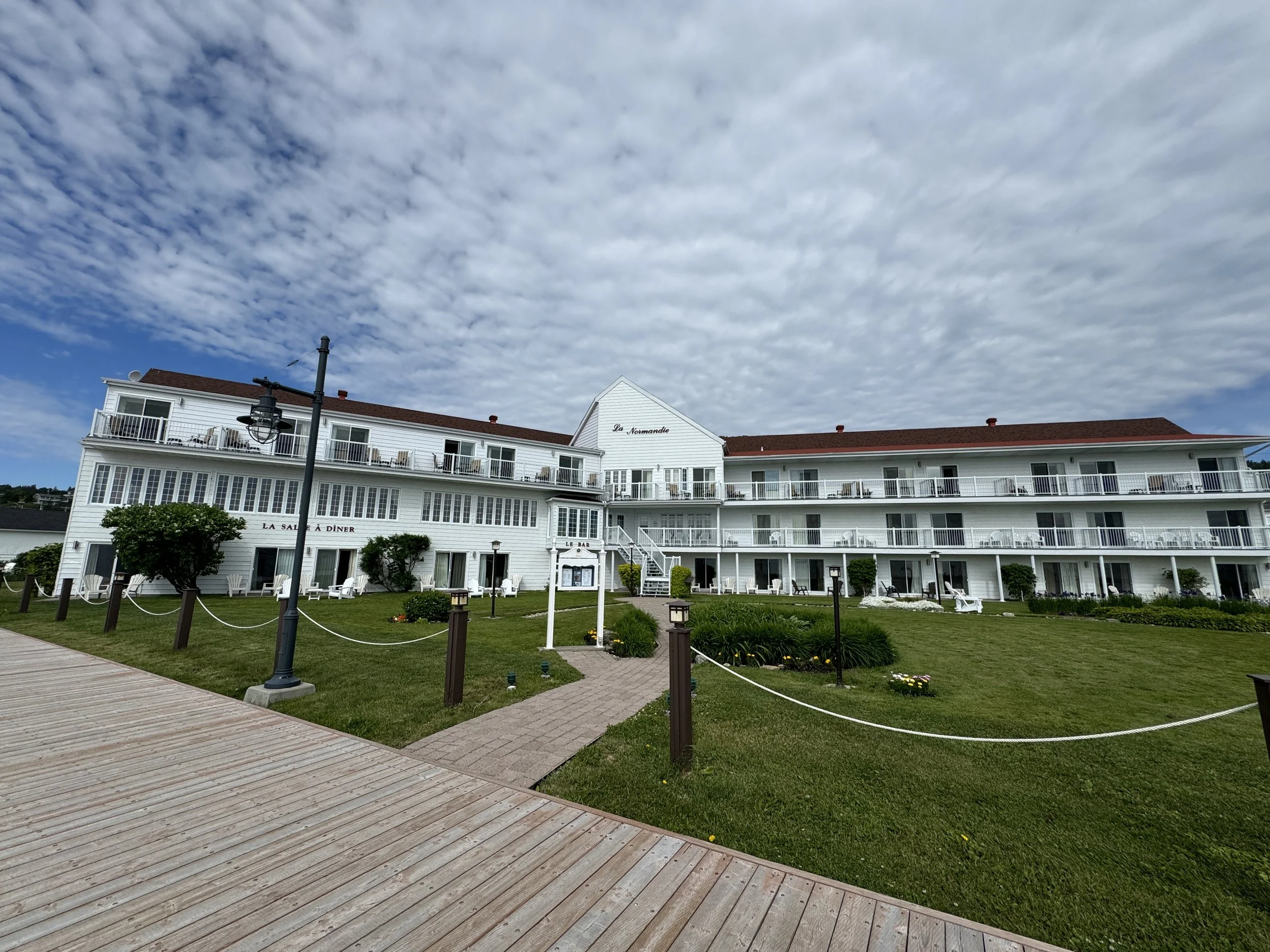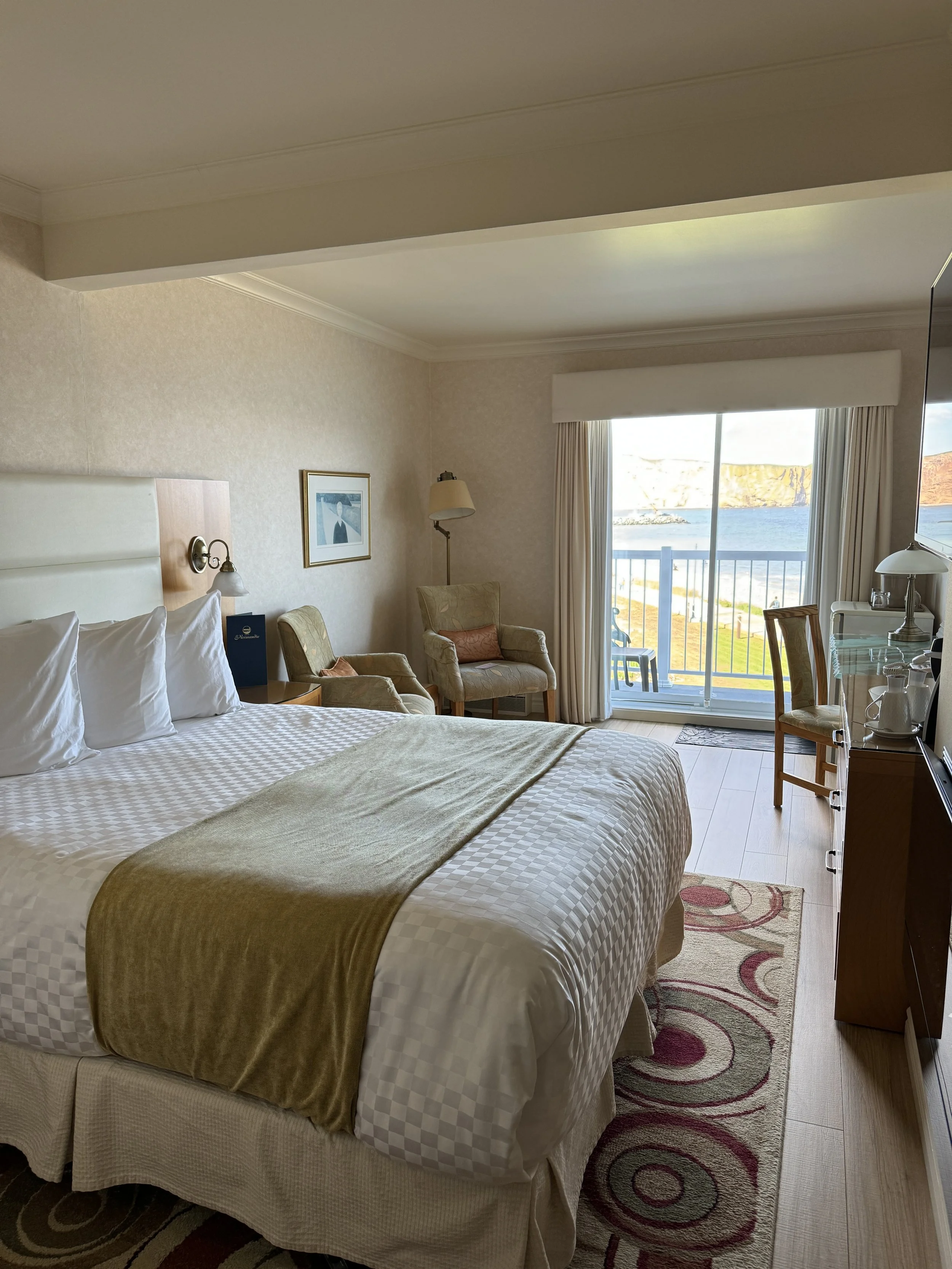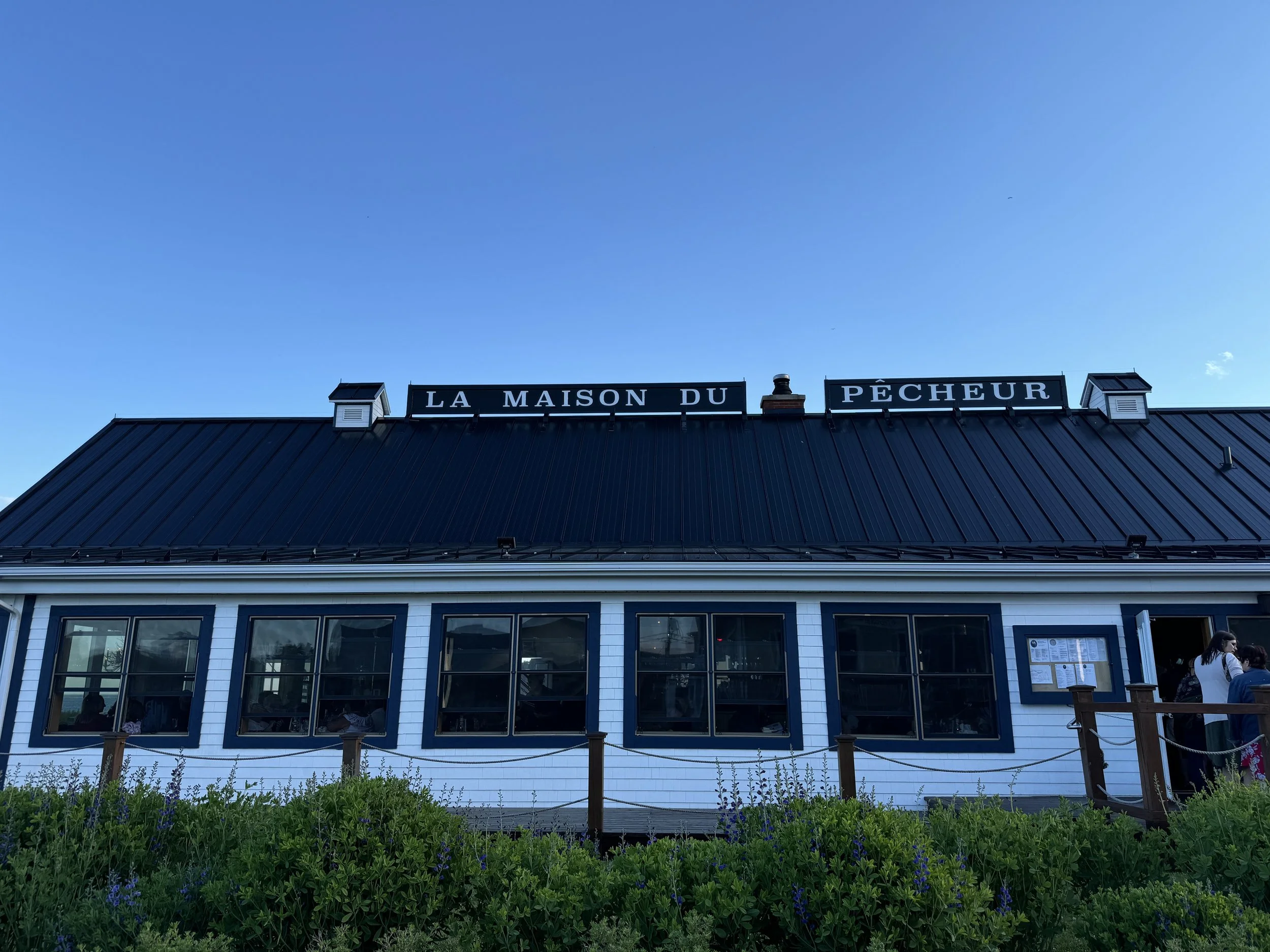Day 7: Forillon to Percé--from the tip to the rock
DAY SEVEN: AT A GLANCE
Starting point: Parc national Forillon, QC, Canada
Ending point: Percé, QC, Canada
Starting mileage: 11,572
Ending mileage: 11,652
Daily total (miles): 80
Trip total (miles): 1,124
Today, Day 7, would have us leaving Forillon and arriving at our next destination and the final one on the Gaspé Peninsula, the town of Percé. When I started researching this trip, I became obsessed with three different parts/places: 1) Forillon (and the view from Mont-Sant-Alban), 2) Percé Rock, and 3) Île-Bonaventure-et-du-Rocher-Percé National Park. Having accomplished #1, these next few days would have us focusing on the latter two. And because #3 required a ferry and cooperating weather, I booked three nights and two full days for our stay in Percé…but I’m getting ahead of myself…first, our last few hours in Forillon.
After experiencing fantastic weather for the last few days, we woke up to a cloudy and cool day and a chance of rain. We took advantage of the weather to do laundry at the park (so great to have laundry facilities—and they’re open 24 hours!!) and catch up on the blog (G took care of the former, while I focused on the latter). Then, with any luck, we’d finish laundry and blogging in time for the weather to clear (and warm up) for us to do a few final walks in Forillon before heading to Percé. And that’s exactly how the day panned out for us! We were lucking out—with one exception. At some point yesterday, probably during one of the hikes when I wasn’t being as careful as I probably should have in switching out cameras and tossing them back in my bags, the glass viewfinder on my X100V cracked. UGH. And while the damage won’t affect the camera/photo-taking, I’m still bummed. But, on the bright side, I’ll have a reminder of a great day and trip! But still, a little bit of a bummer.
On our final morning, we walked the two short trails that start near the Visitor Information and Discovery Center, Prélude à-Forillon and Du Banc. Prélude à-Forillon provided a nice short loop that then connected to the Du Banc trail, which you can take all the way to the Cap-des-Rosiers lighthouse we visited the previous day. The Du Banc trail also includes the Irish Memorial, commemorating the Carricks, an Irish migrant ship that sank off the coast of Cap des Rosiers in 1847. The memorial includes the ship'‘s bell, which was found in 1966 at Blanc Sablon. The plaque on the monument reads: “This commemorative plaque honours the families that risked everything in the hopes of rebuilding their lives in North America.” The ship carried 180 passengers, and from the little research I’ve done following our visit, the exact number of those who died and survived vary. I also learned that human remains found in the park in 2011 and 2016 were identified as those of passengers who perished in the wreck.
We then returned to the Grande-Grave section of the park, which includes a few of the historical homes and learned more about the history of the park. The Grande Grave area of the park gives visitors a sense of what this fishing village would have looked like before the land was made a national park in 1970. The park acknowledges those whose lives/land/livelihoods were impacted, and their stories are told within the many exhibits/sites in this area. According to Parks Canada:
Some 225 families had to leave their properties and nearly 1,200 landowners lost their woodlots and varying amounts of cultivated land. The Mi'gmaq lost free access to their territory. Parks Canada recognizes that many families were greatly affected by this expropriation, which caused great disruption to the family, economic and social lives of these residents and the community. The main sectors expropriated at the time were Cap-des-Rosiers, L'Anse-au-Griffon, Ship Head, Grande-Grave, Rivière-Morris and Penouille.
We visited Hyman & Sons general store, which provides a glimpse into what the store would have been like for the village circa 1920 and the Maison Dolbel-Roberts House, which offers the exhibit “Gaspesians from Lands’ End” that tells the stories of the families who lived in the village. The heritage buildings exist to remind visitors that the establishment of a park we were visiting as tourists—like so many of the parks, lands, and sites we visit—came at a cost to the people and peoples who had once called that land home.
We returned to the tip of the peninsula and to L’Anse-aux-Amérindiens, a site the Mi'gmaq call Gugumijinaweng. The Gaspé Peninsula, which includes Forillon National Park, was significant to the Mi'gmaq and their ancestors, long before the land attracted Europeans who “were drawn by the cod banks close to shore as well as the haven represented by Gaspé Bay. They were also attracted Forillon peninsula’s coves and pebble beaches, which were ideal for fish-drying purposes (such beaches were called “graves” by French fishermen in North America, moreover)” (source). Learning about the importance of cod to the area was fascinating—and how the peninsula and its waters offered not only the ideal conditions for fishing but also for drying and transporting cod all over the world.
With one more part of the park to still visit (time was running out!!), we took one final walk on La Taiga in Penouille, a gorgeous walk on a boardwalk along the water and through a boreal forest (taiga). The trail, with its black spruces, smelled divine—just like the trails earlier on the trip!
And with that, our time at Forillon came to a close, and we were on our way to Percé. I’m not sure I’ve ever been so excited to see a rock. I’ll save the details on that for tomorrow’s post, however. For now, just a photo:
By the time we arrived to our hotel, La Normandie, home-base for the next three nights, we were ready to eat We unpacked the van, checked in to our room, and then we were off to find dinner. And boy, did we luck out with two seats at the bar at La Maison du Pêcheur. We both started with two nonalcoholic Gose beers from Pit Caribou, a local brewery whose N/A beers we first tried while in Gaspésie National Park, and G ordered the seafood and clam chowder (but started eating before I could grab a pic!) to start. For entrees, G had the Trident (from the menu: lobster meat in Noroi orange liquor, maple sugar grilled salmon and pan seared scallops, whisky, raisins and walnuts served with lobster risotto and vegetables), and I had the Linguines du Pêcheur (fisherman's linguines with shrimp, scallops, and lobster). What a way to start this final leg on the Gaspé Peninsula!




























